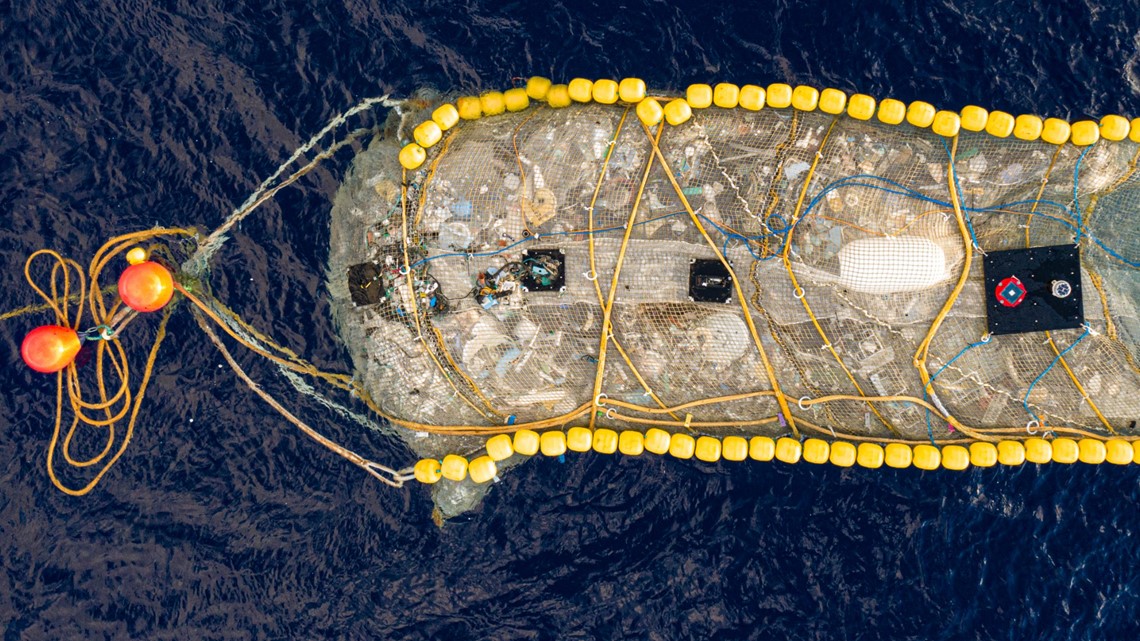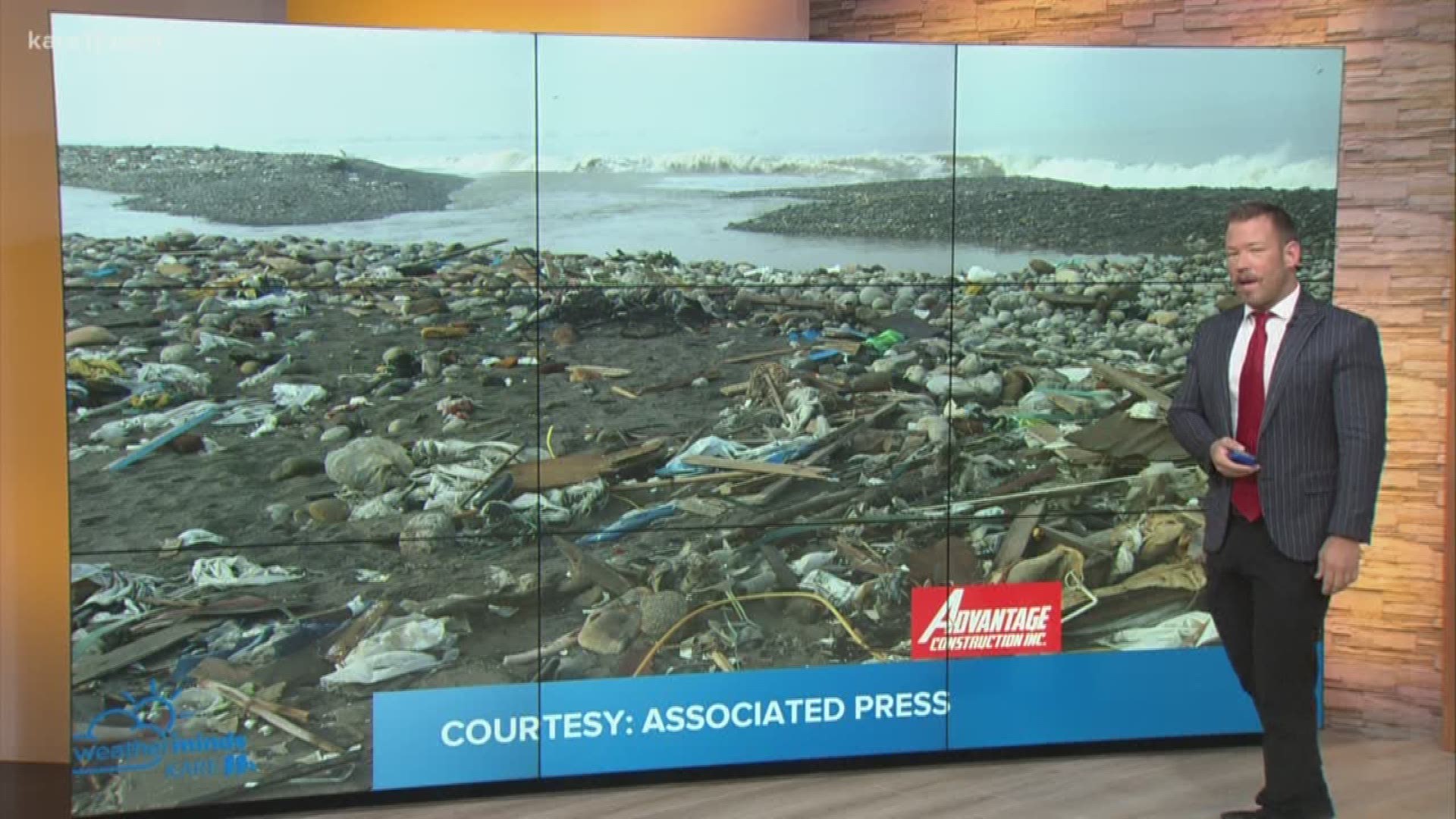ST. PETERSBURG, Fla. — "Let this mark the beginning of the end for the Great Pacific Garbage Patch."
Those are the words of inspiration that The Ocean Cleanup's founder and CEO, Boyan Slat, offered workers after the group pulled its latest haul of trash out of the infamous garbage patch.
The organization says it has pulled a total of 63,182 pounds of plastic from the ocean — 19,872 pounds of which came out in a single haul.
In their efforts to help clean up the ocean, the crew working with the experimental System 002, affectionally named "Jenny," have made some unusual discoveries among the debris.
Things like buoys, crates, sleds, shovels, toothbrushes, toilet seats, golf balls, a mannequin and an entire fridge have been pulled out of the floating swarm of trash by The Ocean Cleanup.
"While it’s just the tip of the iceberg, these kilograms are the most important ones we will ever collect, because they are proof that cleanup is possible," Slat said.
So, how does it work? "Jenny" includes two boats that pull a retention system slowly through "plastic-rich areas." Once the plastic enters the system, it makes its way to a retention zone for removal from the water.
"This plastic is persistent. That’s why we have to take it out. That’s the only way to get back to clean oceans. Fundamentally important. There should be no debate between cleanup or prevention, we need to do both to solve this problem. It’s as simple as that," the organization wrote in a Twitter post.


According to The Ocean Cleanup, five trillion pieces of plastic currently are currently in the ocean. Garbages patches, like the Great Pacific, just happen to house large amounts of debris.
The National Oceanic and Atmospheric Administration says garbage patches are formed by "gyres," or whirlpools that pull the trash into one location. Once there, the debris forms a type of patch.
And the Great Pacific Garbage Patch is not alone out there. There is one other patch in the Pacific Ocean, two in the Atlantic Ocean and one in the Indian Ocean, according to NOAA.
If not addressed, NOAA says garbage patches will only continue to grow over time, meaning more debris littering the ocean.
"This growth will likely worsen current impacts on the environment, navigation, vessel safety, and the economy," the agency wrote.

